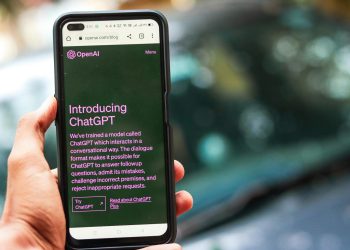Autoregressive Models Overview
Autoregressive models, those sneaky little things, are like the secret sauce in the world of generative AI and have a big part in building those beasts we call large language models. Let's jump in and figure out what these models really do and where they pop up.
Understanding Autoregressive Models
Autoregressive models, or as we might call them, the fortune tellers of sequences, are a type of machine learning model used to predict the next step in a sequence by remembering past steps. These models basically assume that today's output depends on yesterday's happenings (AWS). In simpler terms, they use a bit of linear regression with some backward glancing, meaning they take a peek at previous predictions to nail down what comes next.
| Model Type | Whatcha Get |
|---|---|
| Autoregressive (AR) | Eyes past to see the future |
| Moving Average (MA) | Looks at past goof-ups to improve forecasts |
| ARMA | A magic mix of AR and MA tricks |
Autoregressive models shine because they can handle loads of past data to give super sharp predictions. If you’re the kind who loves diving deep, you might wanna check out our piece on how do large language models work.
Applications of Autoregressive Models
These models are the unsung heroes across many fields and have quickly become vital for all things techy today. Here’s where you’ll see them showing off:
- Natural Language Processing (NLP): These models are like the backbone of big language models, such as those fancy GPTs. They use some clever language tricks to help machines understand and generate human-like text (AWS). Need more info? Head over to our section on natural language processing models.
- Time-Series Prediction: From stock prices to predicting if you'll need an umbrella tomorrow, these models help predict events by peering into historical crystal balls (Amazon Web Services). You can read more about this in our chat on large-scale language generation.
- Generative AI: When data's lacking and training seems to hit a wall, autoregressive models work behind the scenes to dream up new data for training robust AI models. Curious about this? Catch a glimpse at generative AI models.
These uses prove how these models are shaking up the tech scene. By browsing through deeper insights, it’s clear their impact on tech’s future is no small feat. For more tales and examples, check our page on applications of large language models.
By jumping on the autoregressive model bandwagon, companies can tap into predictive analytics and generative AI to fuel creativity and boost efficiency. Wanna peek into what’s next? Take a detour and explore future of language modeling.
Autoregressive Models in Natural Language Processing
Role in Large Language Models
So, you're curious about autoregressive models and how they fit into the bigger picture with large language models, right? These nifty models are like predicting gurus. Picture this: you're trying to guess the next word in a sentence by using the words that came before. That's exactly their game. They’re the secret sauce behind cool tech like text generation, translations, and just getting text to make sense.
Take those LLMs like GPT (Generative Pre-trained Transformers), for instance—big shots in the field! They use autoregressive language skills to tango through natural language, making sense of it all. They look at what’s been typed so far and take a smart guess on what’s coming next. Voila! You get coherent text that actually feels like it means something.
| Model | Year Released | Parameters (Billion) | Training Data |
|---|---|---|---|
| GPT | 2018 | 0.12 | BooksCorpus, Wikipedia |
| GPT-2 | 2019 | 1.5 | Web Text |
| GPT-3 | 2020 | 175 | Web Text, Common Crawl |
Thanks to Medium and Exxact Corp for those stats!
In the business scene, these models are like magic for automating customer support and dinging out articles or crunching data. Getting the hang of autoregressive modeling in LLMs is your ticket to hopping on the tech train and using these tools in new and exciting ways.
Utilization in Generative Pre-trained Transformers
When it comes to GPT models, it’s where the magic happens. Dreamed up by the brains at OpenAI, these models like GPT-2 and GPT-3 are smashing records left, right, and center in the world of language generation. Thanks to their training on heaps of data, they're pros at whipping up quality text and tackling tasks like summarizing, translating, or firing back answers to your questions (Medium).
The GPT setup uses a decoder-based autoregressive method. Think of it like this—it processes what you've typed and then predicts the next bit. This is why it can make text that feels seamless and fits like a glove (Amazon Web Services).
For businesses and tech adventurers, putting GPT models to good use can totally change your game when it comes to handling text. GPT-3, with its zillion parameters, takes sophistication in text generation up a notch, opening doors to create content, have chats with customers, and so much more.
Hop on over to our bit on applications of large language models if you’re itching to know more about these amazing tools.
By jumping on the autoregressive modeling bandwagon with GPT, businesses can keep their eye on the ball in the shifting world of AI and language tech. Make sure to catch up on the future of language modeling to keep these AI goodies working wonders for you.
Autoregressive Models in Time-series Prediction
Autoregressive models are a big deal when it comes to predicting time-series events. These models shine by using past data to guess what's coming next. Let's talk about how these models work their magic in forecasting and where they're used in predicting different events.
Predicting Time-series Events
Autoregressive models have this knack for predicting the next piece in a series by looking at what's come before. Super handy for time-series data, where yesterday's actions can indicate tomorrow's moves. Think of using them for things like guessing the next jump or dip in stock prices, figuring out if you'll need an umbrella later, or even planning your drive home to dodge the traffic jams (AWS). These models scour through past data to spot trends and patterns, helping with pretty accurate hunches.
| Application | Data Type | Prediction |
|---|---|---|
| Stock Prices | Financial Data | Tomorrow's trading price |
| Weather Patterns | Meteorological Data | Upcoming temp and rain |
| Traffic Conditions | Traffic Flow Data | Next hours' congestion level |
With skills like this, autoregressive models are a prized asset across fields like finance, weather forecasting, and transport logistics.
Forecasting Applications
Autoregressive models are like those handy gadgets that come in use everywhere. In finance, they help figure out market winds and stock curves, equipping investors with the smarts to call the right shots. For meteorologists, these models do wonders in peeking into weather's crystal ball, essential for everyone from farmers to event planners. And in the world of traffic, they're steering predictions about jams, optimizing routes, and cutting delay times.
| Industry | Forecasting Task | Benefit |
|---|---|---|
| Finance | Market Trend Prediction | Smarter investment moves |
| Meteorology | Weather Forecasting | Better planning, more safety |
| Transportation | Traffic Flow Prediction | Streamlined routes, less idling |
We're also fascinated by how these autoregressive models are used in advanced stuff like GPT-3 and BERT. Digging into these helps us grasp more about generative AI and its groundbreaking uses.
Autoregressive models offer businesses the chance to turn yesterday's data into smart decisions today. If you're itching for more info, dive into our pieces about natural language processing models and large-scale language generation.
Sprucing Up Autoregressive Model Accuracy
We're all about getting those predictions just right with our autoregressive language models. Why's it so important? Well, let's say you rely on these models, you want them to be spot on! Making sure they hit the mark means really getting to know what makes them tick—especially those sneaky lagged variables.
Nailing Better Predictions
Getting the best out of autoregressive models isn't just about hoping for the best. Nope, there're a few angles you gotta cover to make sure your predictions aren't way off the mark:
- Model Complexity: Think of it like this—more parts, more smarts. A jam-packed model catches those tiny flickers in your data. But don't get too excited, more stuff means more brainpower needed.
- Data Quality: It's like baking—you've gotta start with good ingredients. Rubbish data? Rubbish results. Chuck out the weird bits and get that stuff crisp and clean.
- Parameter Tuning: Fiddling with those knobs and levers, like how many past steps you're peeking back at, can really set your model on the path to greatness.
Here’s a quick look at those factors and how they shake things up:
| Factor | Impact on Accuracy |
|---|---|
| Model Complexity | High |
| Data Quality | High |
| Parameter Tuning | Moderate to High |
Lagged Variables: The Secret Sauce
Lagged variables? They’re the blast from your model’s past, predicting the future by relying on yesterday's data. When you're mixing this old stuff into your model pictures, it starts to "remember" what came before, and makes better guesses (AWS).
But hey, don’t go overboard with the lag. Too much of a good thing might just mess everything up, making your model jittery and loaded with noise. It's kinda like when you're belting out karaoke—more isn't always better!
| Model Type | Lag Order | Accuracy Impact |
|---|---|---|
| Low Complexity Model | Fewer lags | Lower |
| High Complexity Model | More lags, if just right | Higher, with balance |
Don't forget about autocorrelation either—that's just a fancy word for seeing how well the numbers line up when you shift them back. Strong ties between past and present can boost predictions, but knowing just how many steps back to look is key.
Hungry for more gadget-y geeky stuff? Check out our pieces on large language models and neural network language models. They're packed with secrets on squeezing the best out of language modeling magic in all sorts of cool ways.
Comparing Autoregressive Models
GPT vs. BERT
When we're chattin' about big ol' language models, GPT (Generative Pre-trained Transformer) and BERT (Bidirectional Encoder Representations from Transformers) take the cake. They’re like the Batman and Superman of text manipulation, each with their own superpowers. Understanding their quirks helps us decide which hero we need for different jobs on our to-do list.
GPT (Generative Pre-trained Transformer)
Let's dive into GPT, the brainchild of OpenAI. This model is all about forecasting the future—well, the next word, at least. It's got a knack for spinning sentences by peeking at the words that came before. The heavy hitter here is likely GPT-3, grabbing the spotlight for showing off with text generation, spinning yarns, turning languages upside down, and answering queries on-the-fly (Exxact Corp). Because of this forward-thinking mechanism, GPT's a champ at crafting creative outputs and handling tasks where what comes next is a big deal (Medium).
BERT (Bidirectional Encoder Representations from Transformers)
Now, onto BERT. Created by the wizards at Google, BERT is not just any other text-chewing model. It goes all Sherlock Holmes on sentences, obsessing over not just what came before, but also peeping at what follows. This nosy nature makes BERT aces at gaugin' the feel of a sentence and understanding who's who in the word zoo. Hence, BERT shines like a polished penny in tasks like feeling out sentiments and getting a grip on what someone's trying to say (Exxact Corp; InvGate).
Architecture and Parameters
Now, saddle up as we get into the nuts and bolts—how these models are built and what makes each one tick.
GPT
GPT rolls with the Transformer architecture, swaggering with layers of attention that help it keep an eye on the ball—er, words, actually, as it tries to predict what's next. Take GPT-3, for instance, it's got a hefty 175 billion parameters under the hood, letting it weave text that's as smooth as a silk scarf in a car commercial (Exxact Corp).
| Model | Architecture | Parameters (Billion) | What it does best |
|---|---|---|---|
| GPT-3 | Autoregressive | 175 | Text Generation, Summarization, Translation |
| BERT | Bidirectional | 0.34 (base), 3.3 (large) | Sentiment Analysis, NLU, Question Answering |
BERT
BERT's also struttin' with Transformer flair, but it’s got a unique trick—eyeing both what came before and what's comin’. So, it gathers every possible clue before taking a stab at understanding input text. BERT-base boasts 110 million parameters, while BERT-large is flexing 345 million. This enables BERT to boss tasks like answering questions and dabblin' in language processing (InvGate).
Picking the right sidekick for your biz needs can make all the difference. Think of GPT-3 like that friend who helps you write songs or drafts slick responses for customers automatically. Meanwhile, with BERT, you get the pal who knows how to suss out context in a more subtle manner—ideal for reading the room with tasks like handling feelings or using languages to find stuff. For more gory details on what each model can do, check our reads on generative AI models and the latest language tools.
Future of Autoregressive Models
Advancements and Hybrid Approaches
Autoregressive language models, like OpenAI's GPT series, have taken huge steps forward over time. These brainy models, including GPT-3 and the newest GPT-4, generate text word by word, making sure each sentence sticks together and makes sense. It’s like how you'd slowly paint a picture, focusing on one part at a time to see the big picture come together.
These models keep pushing what we can do with natural language—it’s pretty mind-blowing how they spit out text that actually makes sense and fits the context. There's a cool thing they do called in-context learning, which means they pick up clues just from reading a lot of text. Big-time models like GPT-3 are getting really skillful at using these clues efficiently.
Now, researchers are getting creative and mixing things up with hybrid models, bringing together bits from autoregressive and autoencoding types. This combo strategy tries to make the best use of both approaches, blending good contextual understanding with tidy, compact representations for top-notch language generation and comprehension.
| Model Type | What's the Deal? | Superstar Skill |
|---|---|---|
| Autoregressive (like GPT-3) | Goes word by word, keeping the chat coherent | Keeping conversation flowing smoothly |
| Autoencoding (like BERT) | Looks at entire sentences or paragraphs all at once | Grabs the full picture at once |
| Hybrid Models | Mixes both techniques | Gets the best of both approaches |
Implications for Language Understanding
These autoregressive models have huge potential for improving how we understand and use language. As they get smarter, we see them snapping into all sorts of jobs—spinning up text, summarizing stuff, translating languages, even answering questions in lots of settings. Throw in the hybrid approach, and they might just change how we vibe with and harness big language models in business and tech.
By mingling the context-savvy brainpower of autoregressive champs with the thorough insight of autoencoding pals, hybrid models aim to offer unmatched language skills. The potential upsides here are more resilient and spot-on natural language processing models that can benefit loads of sectors.
We definitely need to keep our eyes on these swift advancements. The growing deployment of these models is bound to play a key part in molding the AI and language understanding world. For further insights into how these models tick and the many places they're used, don't miss our pieces on how large language models work and their applications.











